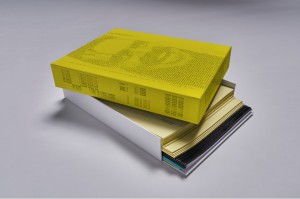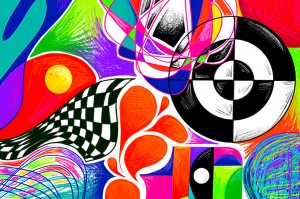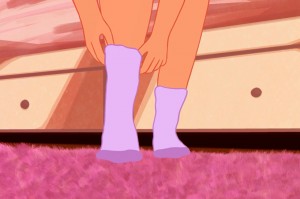What Is Good Design? Design How — Reviewed
Should user experience come at the expense of good design? And what is good design anyway? Phoebe Piper receives some unwelcome visions of the future at Design MCR festival…
The coffee shop shelf: an everyday image of takeaway cups being abandoned on a wall by bustling commuters. Not an obvious visual image, one might presume, to lead the debate at Design MCR’s Design How conference; last month’s festival of creativity, collaboration, and inclusivity. But this was Ben Terrett’s visual opening metaphor for his approach to design that has led him into a successful career, including a prominent role as designer of the new and improved GOV.UK. The coffee shop shelf was presented as a catalyst for conversation around the usefulness, or purpose, of design: a human behaviour or need (caffeine addiction, waste) to be responded to (a shelf or better equivalent).
Design How was billed as a live ‘in conversation with’ event to dissect the minds of the industry’s forefront creators, and to look at ‘how’ they solve complex design issues. There was no doubt about the sheer talent of the panel: Lee Fasciani, founder and creative director of Territory Studios, an agency that works across motion, digital media and design, and whose very recent work includes Hollywood films The Martian, Mission Impossible and The Avengers: Age of Ultron; exec design director for IDEO, Steve O’Connor, a renowned international design firm; Clive Grinyer, a customer experience advisor for Barclays Bank; the aforementioned Ben Terrett, who has just left his role as director of design for the Government’s digital service, GOV.UK. Not forgoing Angus Montgomery, editor of Design Week and host for the evening.
Drawing back on Terrett’s opening image of disregarded coffee cups, and this idea of everyday issues as design opportunities, I began to really think about our indulgent addiction to extortionately priced, disposable coffee (mine included). As I counted the paper cups in Terrett’s Powerpoint picture, I acknowledged the extent of this trend within our society, along with my own economic loss and the coffee industries’ gain; the chemicals used in making the cups and the rate of decomposition (20 years or more in landfill according to latest research). It’s a fashion statement and has been for a while. I consider myself to be a successful adult: therefore, I drink burnt, overpriced coffee. Is this inclusive design meeting a need?
As for Terrett’s recent role, GOV.UK is known by many for being excruciatingly useless. It is the UK’s information site that very rarely gives you the information you need. From a productivity perspective and a customer experience initiation (which the whole panel frequently highlighted as vital), this site was in such dire need of renovation that it was almost guaranteed to please the masses with any revamp. To put it frankly, I wasn’t thrilled to go to an event on the future of design and be presented with an overhauled GOV.UK — or, as the Daily Mail put it, boring.com.
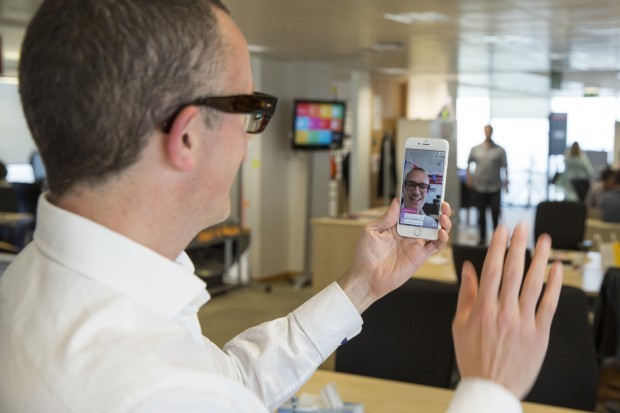
The excitement continued with Clive Grinyer, whose working environment obviously reflected his attire, the classic grey suite. Grinyer supports Barclays bank in new digital design projects — such as Pingit, epayments made directly from your phone. What Terrett and Grinyer had in common was the work that they had produced served a decisive purpose, which was executed neatly and to an extensively high level of detail. The problem is that when I look at these products I don’t see design: I see financial incentive. I recognise the great achievements that have been created through multi-disciplinary collaborations that was repeatedly prescribed by all four designers; however, I feel it is design itself that has become two-dimensional.
As for the other speakers, Steve O’Connor’s conversation was based around design methodology; unfolding the concept of us all as thinkers within a collaborative future of design for the people, by the people. O’Connor backed up Terrett and Gryiner’s ideologies; however, I wanted more than a methodology: I wanted a physical product, something to solidify some form of enthusiasm for the future of design.
Comparatively, Lee Fasciani was the one to stand out. He gave an enriched insight into creating digital experiences and utilising design to generate virtual realities. A highlight was his experience of working with NASA to create the visuals for The Martian; building the future identity of space technology. A future that was actually exciting and far more inviting than the bank payments, coffee cup reality presented tonight. Although Fasciani was arguably more creative and blatantly ambitious — in attitude and product — he was, unfortunately, drowned out by Terrett, Grinyer and O’Connor, and the overriding theme ended up being one of creative repression by financial benefit and consumer rights.
At the beginning of Design How, the question was proposed: What is good design? While the ‘forefront’ designers have created customer-friendly, agile products, which have entwined elegantly with technology, profitability was a clear concluding factor.
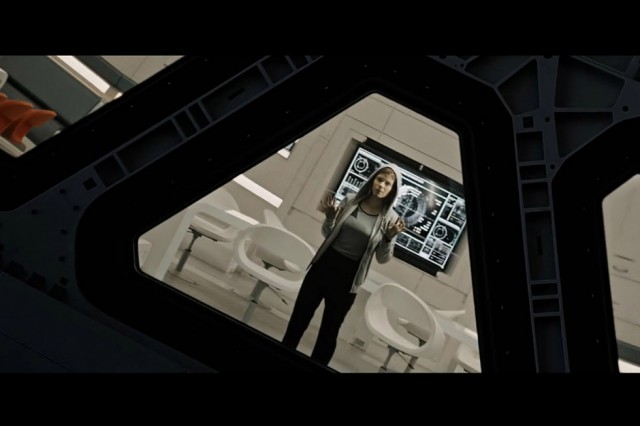
Good design is something that the rest of us can never imagine, let alone believe is achievable. It is a product that is seamless, aesthetically pleasing and – let’s face it — sexy. The future of design as bestowed by Design How was well done, nice and, unfortunately, easily dismissed. I want my perspective to be challenged. I want designers to be courageous. Design MCR festival celebrates creativity, collaboration, and inclusivity: but at this event, inclusivity was represented where user experience is over-compensated. Collaboration, where executives can pry on playfulness from inside their banks. Creativity, where designers’ ideas are lost among materialist targets and marketing agendas.
I was left asking my own questions: Why do designers succumb to the coffee shop shelf – or in other words, practicality — and abandon any sense of character within their designs? And how can we challenge this new design attitude as the way forward?
Phoebe Piper
Phoebe saw Design How on Tuesday 20 October 2015, 6-9.30pm, at the Royal Northern College of Music, 124 Oxford Road, Manchester M13 9RD
Design MCR has now finished, but you can still see Unfinished Business, an exhibition of iconic and appropriated imagery by graphic artist Ian ‘Swifty’ Swift, at Kosmonaut (for the foreseeable future). For more info see the full online programme
Follow @designmcr on Twitter



